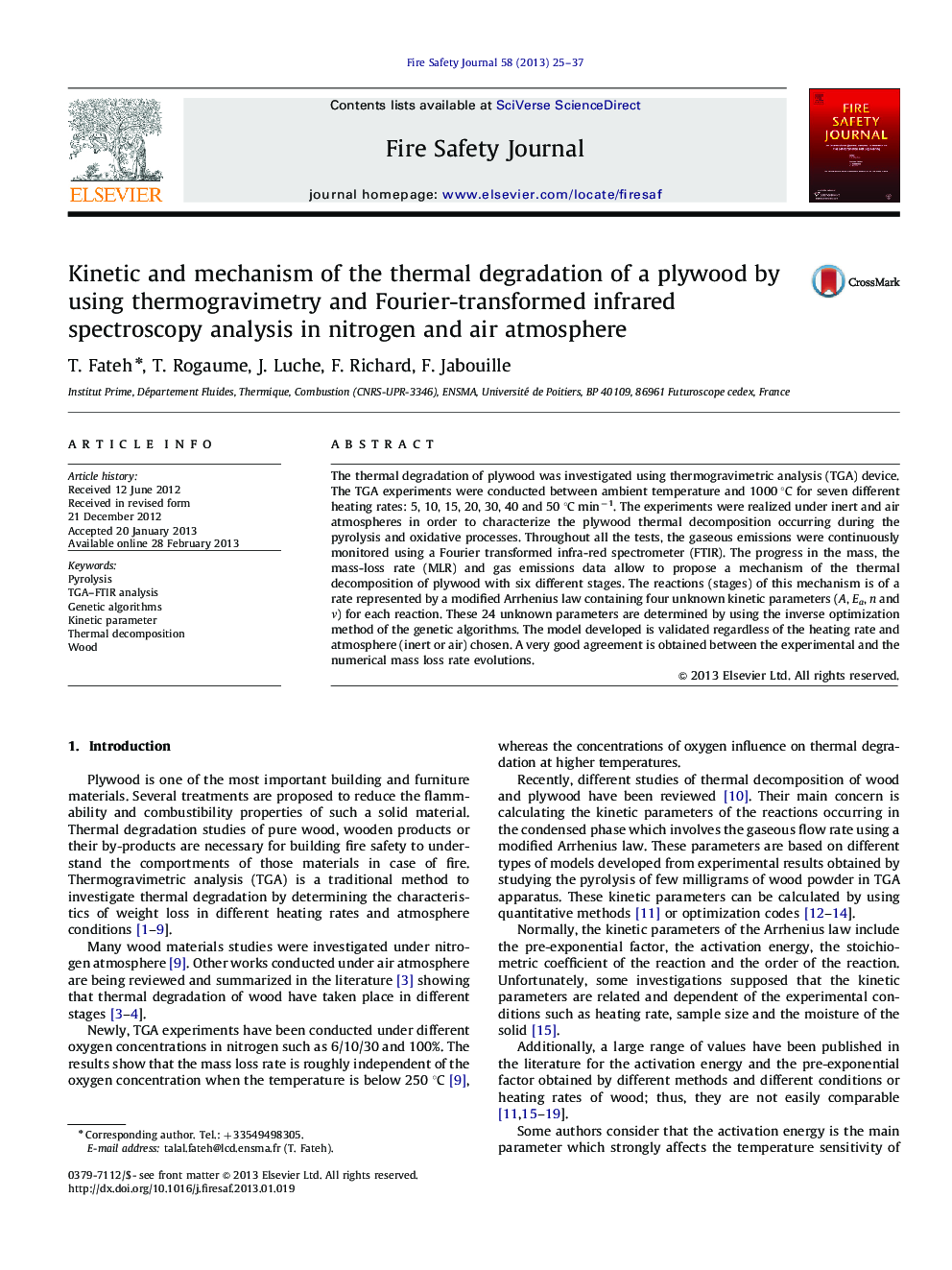| Article ID | Journal | Published Year | Pages | File Type |
|---|---|---|---|---|
| 270033 | Fire Safety Journal | 2013 | 13 Pages |
The thermal degradation of plywood was investigated using thermogravimetric analysis (TGA) device. The TGA experiments were conducted between ambient temperature and 1000 °C for seven different heating rates: 5, 10, 15, 20, 30, 40 and 50 °C min−1. The experiments were realized under inert and air atmospheres in order to characterize the plywood thermal decomposition occurring during the pyrolysis and oxidative processes. Throughout all the tests, the gaseous emissions were continuously monitored using a Fourier transformed infra-red spectrometer (FTIR). The progress in the mass, the mass-loss rate (MLR) and gas emissions data allow to propose a mechanism of the thermal decomposition of plywood with six different stages. The reactions (stages) of this mechanism is of a rate represented by a modified Arrhenius law containing four unknown kinetic parameters (A, Ea, n and ν) for each reaction. These 24 unknown parameters are determined by using the inverse optimization method of the genetic algorithms. The model developed is validated regardless of the heating rate and atmosphere (inert or air) chosen. A very good agreement is obtained between the experimental and the numerical mass loss rate evolutions.
► TGA analysis was used to study the thermal decomposition of plywood. ► Gas emission was detected using FTIR analysis. ► Mechanism of the thermal decomposition was proposed. ► Kinetic parameters calculated by using GA method.
